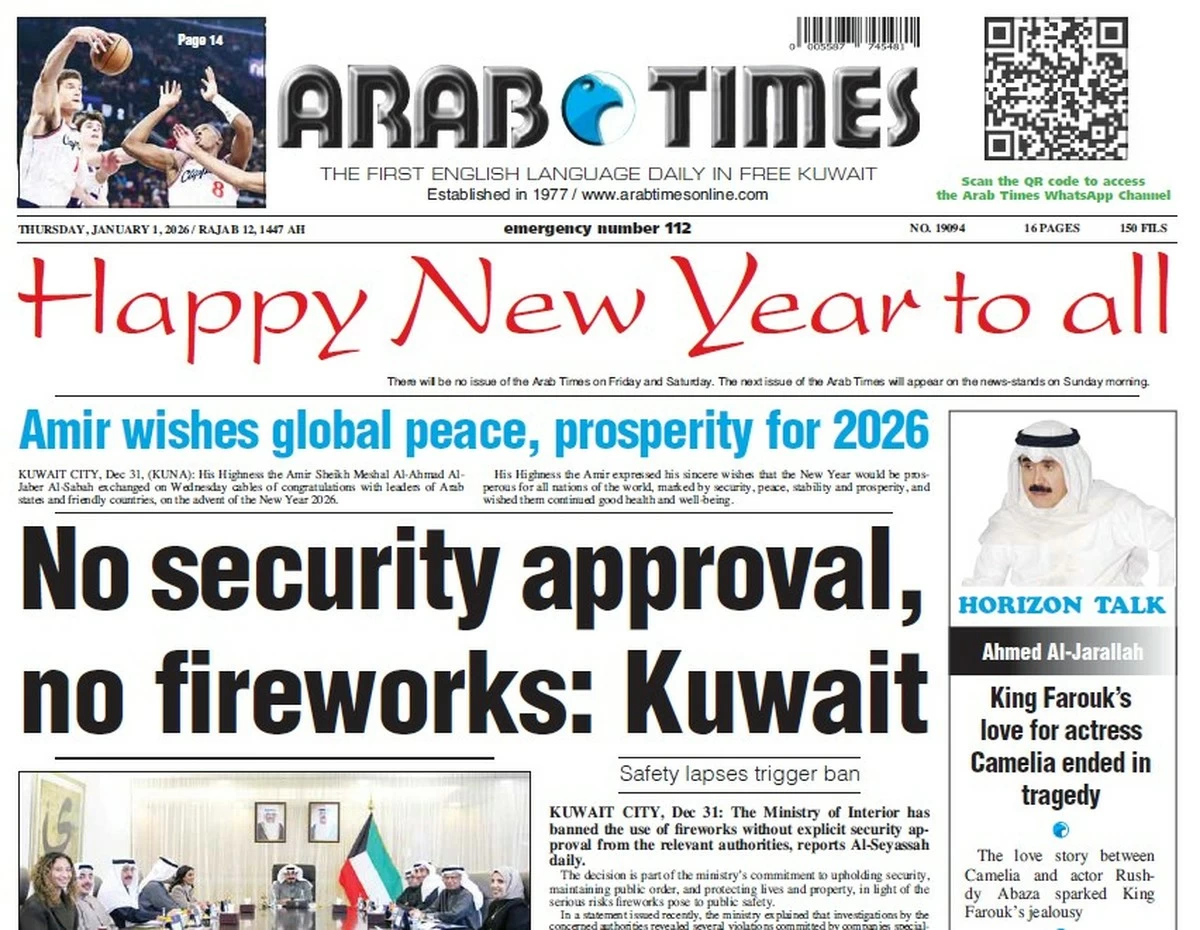22/11/2023
22/11/2023

Kuwait is perhaps considered one of the very few countries in the world that uses two methods in numbering its correspondence, street numbers, vehicle plates, and other uses, depending on the policy followed by the concerned administration. One uses Arabic numbers, which are (1234567890), and the other uses Hindi, which is incorrectly called Arabic. That is (0 - 1 - 2 - 3 - 4 - 5 - 6 - 7 - 8 - 9).
We also see the same chaos in the use of two dates, Gregorian and Hijri, and sometimes only one of them. One of them also comes above the first or vice versa, depending on the whims of nature, and it is a confusing “dating” method. What is the date that is taken into account when an error occurs in writing one of them? Why do we use the Hijri calendar to determine the date of issuance of the message or writing, and not use it with the dates mentioned in the text of the message or book?
The farce reaches its peak in the refusal of government institutions, often religious, to use Arabic numbers, which are actually Arabic, and the insistence on using Hindi, which is actually Indian, and the reason for this is ignorance, of course!
No party moved to remove its ignorance and unify the method of writing numbers, and agreed to suffice with mentioning the Gregorian date, which is followed throughout the world. Even Saudi Arabia recently issued a decision in which the Gregorian date was adopted in the state’s offices and systems.
This means that the employee will in the future receive a lower month’s salary almost every 3 years. The income of individuals and companies that rent their properties will also decrease, by the same percentage of course, and so on with hundreds of other things!
It is enough to know that great countries with deep culture and high self-esteem, such as China, Japan, and Korea, abandoned their numbers, or the way of writing numbers, and adopted Arabic numerals for their ease and complete connection with modern technology systems.
These same countries also continued to adhere to holding their annual cultural and religious celebrations, according to the lunar calendar, on the same date annually, and they overcame the confusion resulting from the difference in days, by adding a few days to the year, so that the Hijri calendar matches the Gregorian calendar, in terms of the number of days. As the Arabs did before Islam, until the tenth year of the Hijra, that is, adding a “default” month every three years, and it is called the “Nasa’i” month.
For your information, the shape of Arabic numerals depends on the number of angles in each number. The number one has only one angle, and the number two has two angles, and so on with the rest of the numbers. As for the circle, or zero, it is round and has no corners, so it is zero angles.
Zero is a symbol to indicate the absence of any amount or quantity, and its importance lies in that it represents the starting point in calculation, that is, the point at which a measure begins, such as a temperature gauge, or the starting point in a sports match, or the launch of a missile, or even in a ruler and measuring tools such as distances, etc.
As for the origin and source of zero, it is unknown. The sources closest to the truth say that the first zero was found recorded in Mesopotamia around the third century BC. The Indians knew it in the middle of the fifth century, and from there it spread to Cambodia near the end of the seventh century, then it moved to China and the Islamic countries at the end of the eighth century AD, who transported it to Europe, so it is called in Spain, Portugal, Britain, France, and the countries that speak their languages, “Zero or Sero,” derived from the word zero.
e-mail: [email protected]
By Ahmad alsarraf


